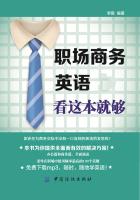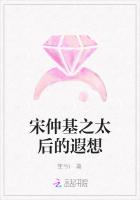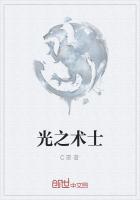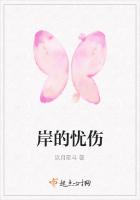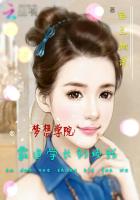Integration of Buddhism, Taoism and Confucianism
Temple Sculpture in the Song Dynasty
The establishment of the Northern Song Dynasty reunited a China that had been split for half century. After this, great changes took place in Chinese religion. One of the most distinct characteristics was the change in Buddhism, Taoism and Confucianism from confrontation and repulsion to integration. From this time forward, Buddhism adopted a Chinese style and became an important part of the culture. The changes were a result of two factors. The first were changes in internal ideology and the spread of religion. Rulers accelerated the integration of the different religions to ensure social stability.
The integration of Buddhism, Taoism and Confucianism is not only reflected in the ideological realm, but also in the artistic aspect. Some temple sculptures of the Song and Yuan dynasties show such characteristics. Temples that combine the styles of two among Buddhism, Taoism and Confucianism, or the grotto temples show the thought of union of the three religions appeared.
Painted sculptures at Jinci Temple
At the foot of the Xuanweng Mountain, 25km southwest of Taiyuan, Shanxi Province, lies the famous Jinci Temple. The Jinci Temple was first built before the Northern Wei Dynasty (386–534) in memory of Shu Yu, the second son of Wuwang of the Zhou Dynasty. The temple was repaired and expanded several times through the Northern Qi, Sui, Tang, Song, Yuan, Ming and Qing dynasties.
Jinci Temple combines cultural relics and beautiful landscape. It is well known for the magnificent architecture and clay sculptures in the Goddess Temple. Jinci Temple combines styles from Buddhism, Taoism and Confucianism and reflects the union of three religions and the worship of multiple gods.
The Goddess Temple is the main building of the Jinci Temple. It faces east. It is majestic and large, forming an axle wire with other buildings. There are 43 colored sculptures in the Goddess Hall. The main statue sits straight in the wood niche with four maids and two female officials in front of her standing in a fan shape. Eighteen attendants stand in a U-shape along the main niche. Although there are many statues the area is not cluttered.
The Goddess is dressed in a chaplet and official robes decorated with flowers and birds. It is decorous in appearance. The robe appears to have a soft and delicate quality and matches her body structure. In the image of the Goddess, the influence of Buddhism is visible. The Goddess is placed on the chancel of the main hall. She sits with the legs crossed and the bottom of the skirt downward naturally. However, the hands of the Goddess are not exposed but hidden in the sleeves, showing an introverted temperament.
Buddhist statue at Qinglian Temple
The Qinglian Temple is on the side of Xiashi Mountain in Zezhou County, Jincheng, Shanxi Province. There is a statue of Sakyamuni on the lotus throne in this temple, which gives it its name. It consists of two parts: An old and a new temple, which are conveniently nestled against the mountain. The elegant and neat buildings and courtyards are located amid the beautiful mountains and clear waters.
The old temple was built during the Northern Qi Dynasty (550–577). It includes a main hall and southern hall. A giant statue of Sakyamuni with two disciples on each side is located in the middle of the main hall. Two statues of Bodhisattvas, Manjusri Bodhisattva and Samantabhadra Bodhisattva sit opposite each other in front of the giant statues. The statues in the old temple were made during the Song Dynasty. The gold-overlaid statue of Sakyamuni is majestic with the face pumping up and the ears hanging low. The statue is wearing a loose Buddhist robe with a naked right shoulder. The statue sits on the lotus throne with the left hand on its knee and the right hand up in the air as if imparting Buddhist doctrines. The statues of Manjusri Bodhisattva and Samantabhadra Bodhisattva are mild in appearance with knots of hair on their heads. They are in brilliant clothes and wear necklaces and bracelets. The Manjusri Bodhisattva raises his hands in front of chest, while the Samantabhadra Bodhisattva puts the left hand on knee and raises the right hand up. The southern hall contains many Tangstyle Buddhist statues in the images of Sakyamuni, Manjusri, Samantabhadra, Kashyapa, Anada and other Bodhisattvas.
The new temple was built during the Sui Dynasty (581– 618). The sculptures of the Song Dynasty are mostly in the Sakyamuni Hall and the auxiliary halls on both sides. The statues of Sakyamuni, Manjusri Bodhisattva and Samantabhadra Bodhisattva are in the Sakyamuni Hall. The statue of Sakyamuni has a wide face, golden hair and majestic appearance. His ears hang low and the right forearm has been damaged. The statues of Manjusri Bodhisattva and Samantabhadra Bodhisattva have a similar appearance with knot of hair, red crown, round face and long eyebrows. Their eyes are soft as if they are looking down at the world. They are wearing similar necklaces and similar clothes with different patterns. They are also very similar in appearance. Due to the ravages of time, their hands are damaged.
The auxiliary halls on both sides include statues of Manjusri Bodhisattva, 16 Arhats, Ksitigarbha and Yamarajas. All statues were made during the Song Dynasty. Among the majestic and vivid statues, those of Yamarajas are most distinctive. Yamarajas are ten unique images of Buddhist sculptures from China.




